Late winter/early spring Arrow viewing, part two
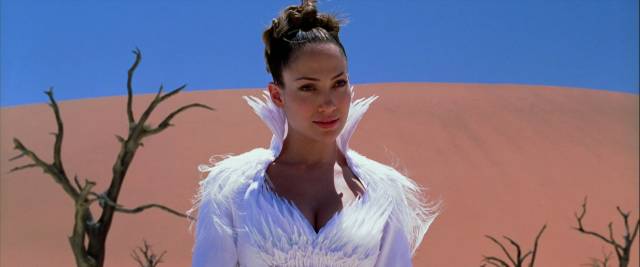
Among my recent Arrow acquisitions are a number of movies I’d previously seen and had decided to revisit despite having some ambivalence about them. When my opinions sometimes conflict with the consensus about a particular movie, I’ll occasionally take another look to see whether I’m missing something important – although I’ve always been opinionated, I do recognize that it’s possible that I may be wrong.

The Cell (Tarsem Singh, 2000)
Tarsem Singh’s debut feature, The Cell (2000), is definitely a case of style over substance, an opulently visual experience in which narrative is merely a flimsy hook on which to hang frequently breathtaking imagery. Seeing it again in a spectacular 4K restoration hasn’t altered my impression, but has in fact confirmed it; in a lengthy, disarming interview on the disk, Singh states that he really had no interest in making a serial killer movie but saw in Mark Protosevich’s script an opportunity to create those images without the constraints of narrative plausibility. The movie is more art installation than conventional storytelling.
And that is definitely its chief strength (the marriage of narrative play and imagery is more successful in his superb second feature, The Fall [2006]). The structure of The Cell is fairly conventional: a sexually tormented serial killer kidnaps young women, tortures and eventually kills them with an elaborate installation involving drowning them in a tank before engaging in necrophilia. With his latest victim on a timer, he’s captured by the cops but suffers a head injury – there’s no way to get information out of him before she dies. No way, that is, except via an experimental therapeutic technique which involves melding a patient’s mind with that of a therapist through a computer interface.
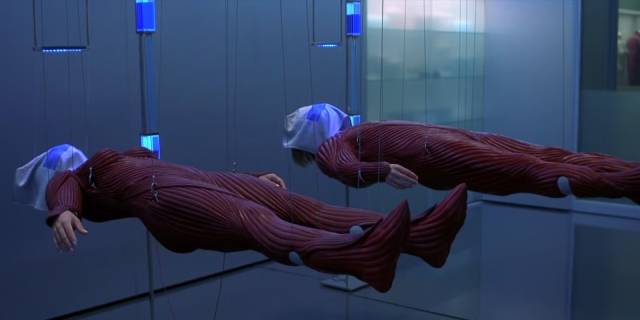
The risks are huge; the therapist might get lost in the elaborate world created by the patient’s subconscious as a defence against his own psychosis. Although the technique’s most skilful practitioner is reluctant to enter the dangerous mind of a twisted serial killer, she agrees because there may still be time to save the victim. And so she enters an elaborate subjective world fraught with danger, loaded with symbols – some obvious, others obscure – and does battle with the killer in various guises. He appears as a frightened, abused child, but also as a monstrously powerful figure created to protect that child.
It’s this inner landscape and its monsters which constitute The Cell’s raison d’être and Singh takes full advantage of the opportunity to create a fantasy world with only tenuous connections to the ostensible narrative. There are obvious echoes here of the outright fantasy of his third feature, Immortals (2011), about Greek gods, the hero Theseus and the Titans. As visually sumptuous as The Cell is, it frequently seems to forget that it started out as a contemporary story of cops working against the clock to save a life. But if you forget the plot mechanics, the cat-and-mouse conflict between therapist and mad killer does have its pleasures.
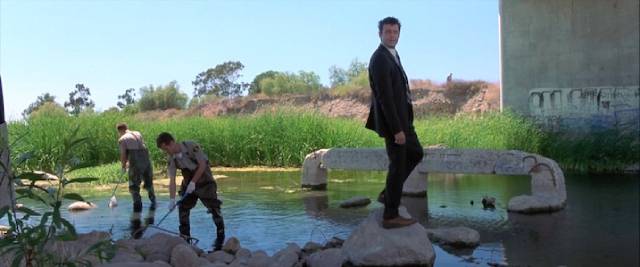
Chief among those are Jennifer Lopez’s nuanced performance as therapist Catherine Deane and Vincent D’Onofrio’s various manifestations of killer Carl Stargher’s malformed id, a combination of self-aggrandizing monstrosity and childlike fear. I can’t say that The Cell is a good film by conventional standards, but then even the director admits he wasn’t particularly engaged by the story; yet it is a frequently fascinating exercise in visual world-building which draws on Singh’s previous experience making music videos and commercials, where he was required to compress ideas into dense, allusive images.
That imagery looks very impressive in Arrow’s new restoration, which comes in a two-disk set containing three versions of the film – the theatrical cut, a slightly longer director’s cut, and an alternate grading by DoP Paul Laufer, which also reframes the 2.39:1 image to 1.78:1 – and loaded with extras. There are four commentaries, two lengthy interviews with Singh and Laufer and numerous featurettes on aspects of the production, plus a collection of deleted scenes. A mastering error resulted in a glitch in the director’s cut, with a couple of missing shots replaced by duplicate material, but Arrow says a corrected replacement disk is in the works.
*
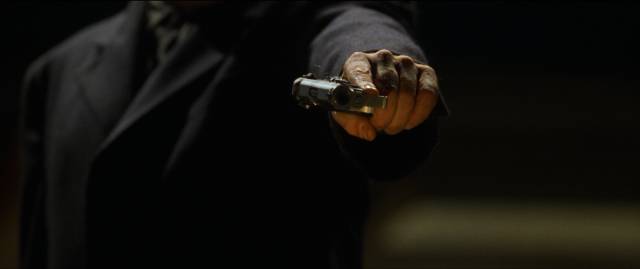
The Usual Suspects (Bryan Singer, 1995)
I’ve never really understood the high regard afforded Bryan Singer’s The Usual Suspects (1995), a movie which annoyed me the first time I saw it and continued to annoy me on subsequent viewings, including this most recent one on Arrow’s new disk. Which to some degree is odd, because I do like heist movies. Christopher McQuarrie’s script tells the story of five strangers brought together in a police cell after a truck hijacking, who all agree to a plan for a big job involving a shipment of cocaine. Behind the plan is a mysterious figure named Keyser Soze, a legendarily ruthless Hungarian gangster whose name alone fills even the toughest criminal with fear. The heist inevitably goes wrong and ends in slaughter and an explosion on the ship bringing in the drugs. There are two survivors, one so badly burned he’s in a coma – emerging briefly to mutter the name Keyser Soze – the other a weaselly little guy with a bad limp named Verbal Kint (Kevin Spacey).
We get the whole story from Kint during a long, hostile interview with detective Dave Kujan (Chazz Palminteri), events playing out in an elaborate, frequently confusing string of flashbacks, with doubt being thrown in multiple directions about the identity of Soze. Is he actually Kobayashi (Pete Postlethwaite), who represents himself as Soze’s right-hand man as he plots the heist? Or is he Keaton (Gabriel Byrne), a disgraced cop fallen on bad times? In Kint’s telling, Keaton is revealed as the likely suspect and since Keaton died during the big blow-up, who’s to say anything different?
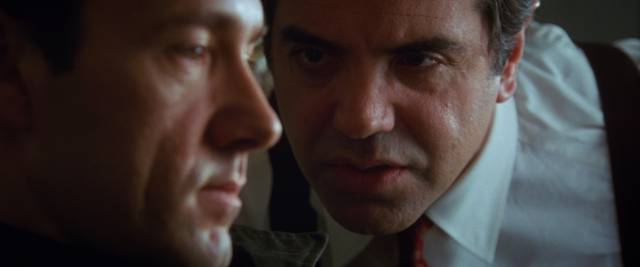
At this point it’s probably not a spoiler to say that in the movie’s final twist, Kint, a supposedly minor player in the plan, is revealed to be Soze, which discredits everything we’ve heard and seen since the beginning. It’s not that Kint is a classical unreliable narrator; he’s a self-interested villain who has lied about everything to point the finger of guilt at a dead man so he can get away scot-free. Everything in the story until the “surprise” reveal instantly becomes meaningless – we suddenly have no idea who any of the characters actually were or what they did; all the complicated plotting and every encounter along the way with various go-betweens and underworld contacts have been made up to deflect suspicion from Kint. In effect, after sitting through the movie we’re told that there actually hasn’t been any story at all, just a collection of lies. “Cleverness” is no substitute for actual narrative invention and, once again, the movie left me with nothing but irritation, despite an excellent cast and polished production (Newton Thomas Sigel’s cinematography is good). Writer McQuarrie went on to do much better work – Jack Reacher (2012), Edge of Tomorrow (2014) – as well as much worse – The Mummy (2017).
The movie looks fine in Arrow’s 4K restoration, which comes with two commentaries and a slew of archival featurettes.
*

The Terminal Man (Mike Hodges, 1974)
I have always been ambivalent about Mike Hodges’ The Terminal Man (1974), I suspect because it stars George Segal, an actor who always seems to stand, with a slightly mocking contempt, outside the character he’s playing. And coming after the ground-breaking gritty realism of Get Carter (1971), this cautionary tale about scientific hubris (based on the second novel published under Michael Crichton’s real name and twelfth overall, after ten pseudonymous books) seems a very cold and detached piece of work. But for some reason, it clicked with me this time. I’d hate to think it’s just a matter of seeing a shiny new hi-def master; it may simply be that I have a particular fondness for science fiction movies from that period, a time before the over-inflated visual frenzy which began with Close Encounters of the Third Kind and Star Wars (both 1977) and metastasized with the advent of CGI in the mid-’90s – movies like Robinson Crusoe on Mars (1964), 2001: A Space Odyssey (1968), Colossus: The Forbin Project (1970).
What really struck me on this viewing is how similar The Terminal Man is in style and tone to Robert Wise’s The Andromeda Strain (1971), a movie which has only increased in my estimation over the years. Perhaps this isn’t surprising, since Wise’s film was adapted from the first novel published under Crichton’s real name. Both movies deal with no-nonsense scientists engaged in urgent efforts to counter a serious problem resulting from earlier stages of their research; both have a coolly clinical attitude to the material, with human individuality and idiosyncrasies suppressed by the sheer weight of the institutional settings in which the narratives play out.
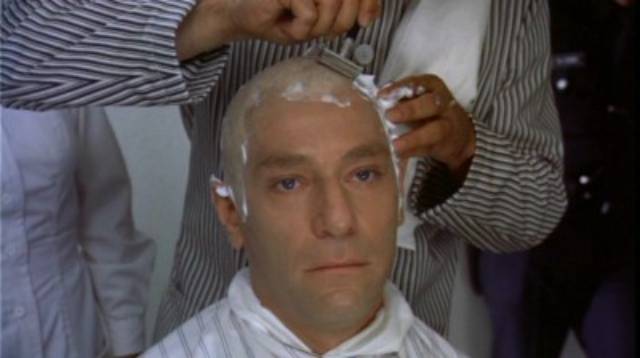
While, as far as we know, there hasn’t been an actual instance of a deadly pathogen brought back to Earth by a satellite or returning space vehicle, The Terminal Man’s brain implant is actually something being worked on – and in fact stories coming out of Elon Musk’s Neuralink suggest that the movie’s consequences are very plausible. Experimental monkeys reportedly have attempted to tear the implants out of their own heads as they’re driven insane by whatever the devices are doing to their subjective experience, which is uncomfortably similar to what happens to Harry Benson in Hodges’ film.
Harry (Segal) is a computer engineer who, having sustained a severe brain injury, now experiences epileptic seizures and blackouts during which he becomes violent and loses his memory. His condition is deteriorating, so he seems a viable candidate for a new experimental procedure devised by Drs. Ellis (Richard Dysart) and McPherson (Donald Moffat). Consulting psychiatrist Dr. Ross (Joan Hackett) is there to monitor Harry’s response to the procedure, which implants electrodes into the damaged area of his brain. With some fine tuning, the doctors program the electrodes to detect the onset of a seizure and use micro-charges to correct the trouble, essentially turning off the electrical storm.
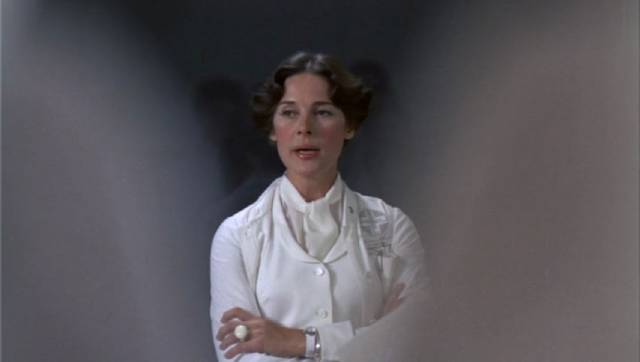
At first it seems to work better than anticipated, but the techs in charge of the computer monitoring Harry quickly detect some anomalies. Rather than eliminating the attacks, the implant seems to be increasing their frequency. They speculate that the brain is quickly becoming addicted to the pleasurable sensations the electrodes trigger when blocking the seizures and is now actually causing new seizures in order to get another fix. Before Dr. Ross can examine Harry, he escapes from the clinic and the increasingly frequent seizures amplify the violent tendencies which got him into trouble in the first place. Out of control, he commits a brutal murder and Dr. Ross races to get to him before the police. The cops reflect the impersonal scientists, neither viewing Harry as human – he’s either a research project or a mere threat to be eliminated. In the end, confused and desperate, he makes his way to a cemetery where, in a rather overdetermined symbolic climax, he crawls into an open grave and is finally dispatched by the inhumanly anti-empathetic forces of the state in the form of a police sniper leaning out of a helicopter as Dr. Ross tries desperately to save him.
While the obvious theme can be traced back at least to Mary Shelley and Frankenstein – people in their arrogance meddle with things best left alone – Hodges’ visual treatment creates a potent metaphor for the conflict between a flawed individual and the impersonal institutions of a society rapidly replacing a nuanced understanding of flawed human nature with a cold-blooded technocratic belief that people are nothing more than biological machines. Dr. Ross might question the ethics of the experiment, but she’s powerless to alter the course of events, her empathy for and understanding of Harry ultimately outweighed by the institutional forces which, in the end, even she serves.
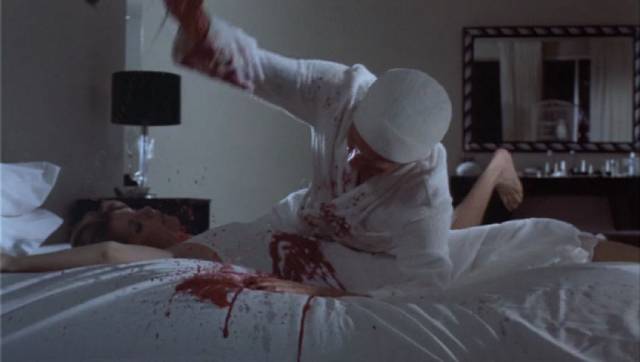
In addition to the source material connection, there’s another, perhaps more important, reason that The Terminal Man echoes The Andromeda Strain; both were shot by the prolific and versatile Richard H. Kline, who contributes a great deal to their cold, science-determined look within which the characters are trapped. The aura of technology outstripping our capacity to control it was definitely in the air back then, stripped of the comforting myth that we might reassert our humanity and regain control – something more common in post-Star Wars science fiction where you’re more likely to find self-determined heroes dominating events. Human beings fared less well in the ’60s and early ’70s as disillusionment settled in in the wake of the abortive social upheavals of the decade and it was less easy to believe in simple technological fixes for existential problems.
While The Terminal Man will never be my favourite Mike Hodges movie – those would be Get Carter, Black Rainbow (1989) and Croupier (1998) – I did gain a greater appreciation for it on this viewing. In addition to a commentary, the disk includes an archival interview with Hodges and three video essays. It also offers both the original theatrical cut and Hodges’ director’s cut; the only real difference between the two is that the theatrical cut contains a four-minute pre-titles prologue in which the doctors explain their project to a backer on a rooftop patio, filling in Harry’s case history of violence. The director’s cut begins with the titles and lets the background information emerge as the story unfolds.
Comments